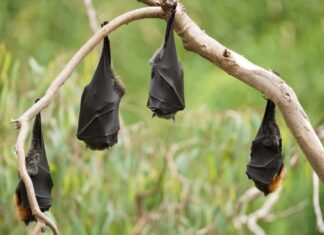

Mount Olivet’s senior pastor A.C. Talton speaks about the history of the church to a group of about 50 people on a walking tour through the Point, the African American neighborhood in Haddonfield.
African Americans first came to Haddonfield as slaves in the 17th and 18th centuries, but by the late 19th century, some 250 of them lived freely in the borough and made up 10% of its population, according to the 1890 Census.
“It was a thriving community with dozens of families, local churches and businesses,” said C. Adrienne Rhodes, co-founder of the Preserving Black Haddonfield History Project as the organization kicked off a walking tour of 12 sites in The Point neighborhood on June 14.
Long-age residents there patronized Miss Ross’ convenience store; got their hair cut at the Barbershop at The Point; attended services dressed in their Sunday best at the Mount Pisagh, Batesville and Mount Olivet Baptist churches; and headed to the Blazing Rag Tavern after a hard day’s work.
The Point included the Douglass Avenue Public School for Coloreds, a segregated elementary school for children, and the residence of Attee Leeman, Haddonfield’s first African American landowner.
“History is so important,” Mayor Colleen Bianco Bezich told the 50-plus people gathered at Centennial Field, where the tour began. “Thank you for preserving that history for us. When I took the tour last year, I was amazed that slaves had been traded at Cooper River.”
“I am a history buff,” acknowledged Camden County Commissioner Al Dyer. “This is a great day, and it’s important that we remember this area. As an educator, I think all schools should come through here (the Point).”
“Black history in Haddonfield is often forgotten, yet it runs so deep through the very foundation of the town,” noted Commissioner Jon Young. “This (preserving Black history) project is a way to honor and celebrate the contributions of Black residents of the past and keep their legacy alive forever.”
One of the sites on the tour is the former Lincoln School, now the Tarditi Commons, a housing complex for senior citizens. It is named after former mayor Jack Tarditi, who addressed the tour group.
“We are finally realizing the importance of our town’s Black history thanks to Adrienne, a graduate of Haddonfield Memorial High School,” observed Tarditi, just before a rousing ovation for Rhodes, a fifth-generation member of the Arthur family whose members have lived in Haddonfield and Lawnside since the mid-1800s.
“With this project, we’re able to get through the barriers of silence and discomfort,” Haddonfield library director Eric Zino pointed out. “It is in this context that the work of The Preserving Black Haddonfield Project is so tremendously valuable.
“With the advantage of their first-person narratives and recollections, we have a much easier place from which to begin and a springboard to the depth of this history,” he continued. “They have inspired curiosity and the further pursuit of these stories, which will be collected and enshrined in institutions such as the public library, the historical society, the schools and public knowledge.
“The markers will proudly signify this fact.”
As part of the tour, those historic markers were placed at Mount Olivet and Tarditi Commons, and there is a New Jersey Black Heritage Trail sign at the Point, where Ellis and Potter streets intersect. Other tour sites included The Prayer House, Whitcraft Farms and the Haddonfield Little League fields.
The first walking tour was on June 19 last year, and it highlighted how by the late 1800s, there was a thriving borough community of free African American men and women who raised their families, built homes and owned businesses around the Point, just above Cooper’s Creek.
The area has been home to a majority of Haddonfield’s Black residents since the 1700s.
“The markers are monuments,” Rhodes explained. “They serve as tangible reminders of events and figures, helping to preserve our cultural heritage for future generations. They also have the power to inspire us, to remind us of our shared humanity and the values that bind us together.”
The Preserving Black Haddonfield History Project is an intercommunity collaboration between local historians, religious leaders, students and teachers, the Haddonfield and Rotary Club foundations, the Haddonfield library and its alumni society and current and former residents.
“It matters, the extent of our heritage in Haddonfield,” Rhodes pointed out. “Part of the purpose of this project is for those who live there now to hold up your heads high. You don’t have to feel like you don’t belong.”
In partnership with Haddonfield Memorial High School and Haddonfield Education Association, the project also publishes an annual collection of essays, “Preserve: Narratives from Historic Haddonfield’s African American Community.” It’s available at Inkwood Books and the library.
For information about the Preserving Black Haddonfield History Project, go to www.haddonfieldlibrary.org.









